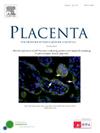Pulmonary trophoblastic deportation in the hystricomorph rodent Lagostomus maximus
IF 3
2区 医学
Q2 DEVELOPMENTAL BIOLOGY
引用次数: 0
Abstract
Introduction
Trophoblast has been reported in the lungs of gestating eutherian mammals with hemochorial placenta, including humans, cotton rats, and American hares. This study describes the discovery of trophoblastic-like cells in the lungs of Lagostomus maximus.
Methods
Lung and placenta samples from non-pregnant and pregnant plains viscachas were analyzed using histology and immunohistochemistry.
Results
Macroscopically, the lungs of females in both groups showed no alterations, but microscopic examination of the lungs from pregnant females revealed lesions and trophoblast-like cells. Markers such as pancytokeratin, MMP-2, MMP-9, and progesterone receptors were found in both pulmonary trophoblastic cells and the various types of trophoblasts in the placenta and subplacenta. Notably, cytokeratin-7 showed similarity with the placenta but not with the subplacenta. Cells identified in the lungs that were positive for markers similar to trophoblast giant cells in the maternal blood chambers suggest that the trophoblast that reaches the lungs may originate from giant cells that enter maternal blood circulation rather than those that invade the uterine artery. Immunohistochemical analysis indicated that, unlike placental trophoblast, the lung cells exhibited no proliferative activity.
Discussion
The lack of this process in mice and the difficulty of developing in vivo experimental models have prompted the exploration of in vitro models. L. maximus may serve as an alternative model to study this process, necessitating further research to determine the timing of this phenomenon during gestation and whether pulmonary alterations persist after parturition.
子宫形态啮齿动物大鼠肺滋养细胞的排出
滋养细胞已被报道存在于含绒毛膜胎盘的妊娠哺乳类动物的肺部,包括人类、棉鼠和美洲兔。本研究描述了在大Lagostomus maximus肺中发现的滋养细胞样细胞。方法采用组织学和免疫组织化学方法对未妊娠和妊娠平原脏器的胎盘和胎盘标本进行分析。结果两组女性的肺在显微镜下均未见改变,但妊娠女性的肺镜检显示病变和滋养细胞样细胞。在肺滋养层细胞和胎盘及胎盘下层各种类型的滋养层细胞中均发现了泛细胞角蛋白、MMP-2、MMP-9和孕酮受体等标志物。值得注意的是,细胞角蛋白-7与胎盘相似,而与胎盘下层不同。在肺部发现的细胞与母体血腔中滋养细胞巨细胞的标记物相似,表明到达肺部的滋养细胞可能来自进入母体血液循环的巨细胞,而不是侵入子宫动脉的巨细胞。免疫组化分析显示,与胎盘滋养细胞不同,肺细胞没有增殖活性。由于在小鼠体内缺乏这一过程,且难以建立体内实验模型,促使了对体外模型的探索。大乳杆菌可能作为研究这一过程的另一种模型,但需要进一步研究以确定妊娠期间这一现象的发生时间以及分娩后肺部改变是否持续。
本文章由计算机程序翻译,如有差异,请以英文原文为准。
求助全文
约1分钟内获得全文
求助全文
来源期刊

Placenta
医学-发育生物学
CiteScore
6.30
自引率
10.50%
发文量
391
审稿时长
78 days
期刊介绍:
Placenta publishes high-quality original articles and invited topical reviews on all aspects of human and animal placentation, and the interactions between the mother, the placenta and fetal development. Topics covered include evolution, development, genetics and epigenetics, stem cells, metabolism, transport, immunology, pathology, pharmacology, cell and molecular biology, and developmental programming. The Editors welcome studies on implantation and the endometrium, comparative placentation, the uterine and umbilical circulations, the relationship between fetal and placental development, clinical aspects of altered placental development or function, the placental membranes, the influence of paternal factors on placental development or function, and the assessment of biomarkers of placental disorders.
 求助内容:
求助内容: 应助结果提醒方式:
应助结果提醒方式:


